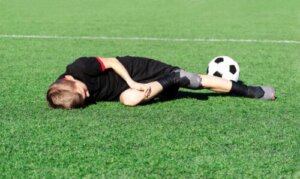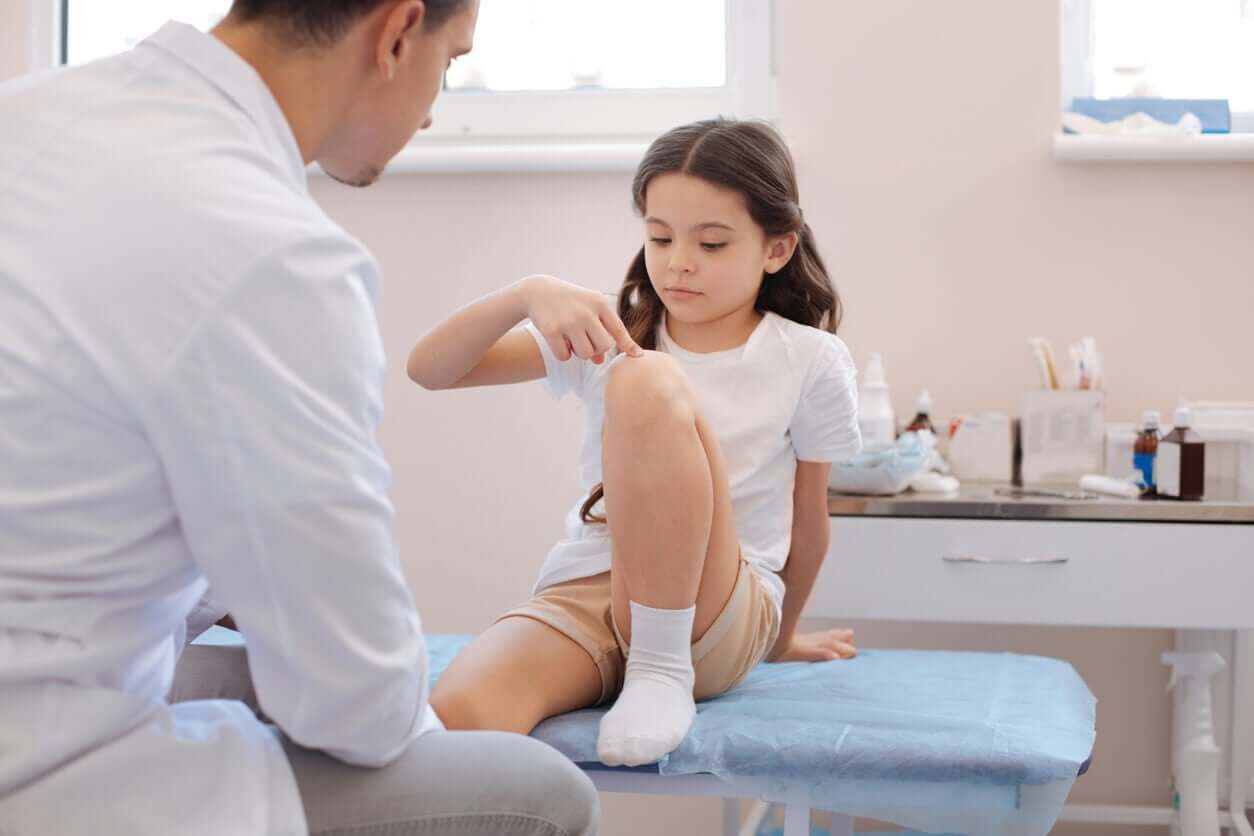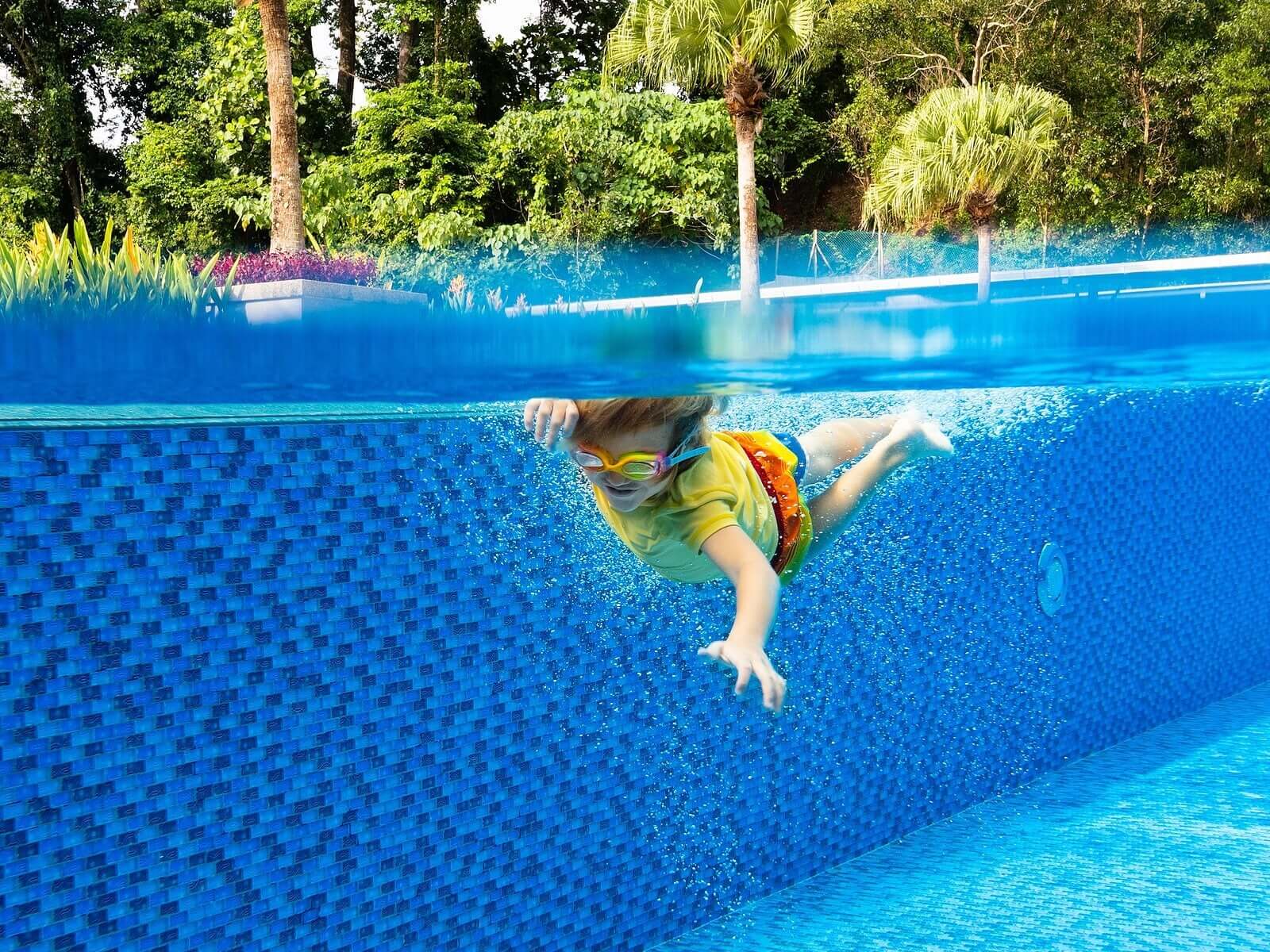Phantom Injuries in Children: What You Need to Know

Competitive sports activities in childhood have their costs. Some children are unable to handle pressure and exhibit body aches or mobility difficulties, among other physical ailments. But, upon clinical examination, doctors are unable to verify the presence of any real lesion. This group of pathologies is known as phantom lesions in children.
Promote physical activity from childhood is essential, but we need to ensure that the sport is carried out in a recreational way, without demands that produce negative emotions. This way, we avoid physical and mental suffering in little ones.
What is phantom pain?
It’s common to hear about a phantom limb after an amputation, but this condition is something else entirely.
Children with a phantom injury are children who suffer real pain, just as if they’d a traumatic injury to some part of their body. So, we can say that phantom pain is an unpleasant physical and emotional sensation, originating in the brain.
It’s usually a fairly chronic condition and affects the child continuously (every day) or intermittently (with momentary relief). And like any illness that lasts over time, it conditions the physical, social, and emotional sphere of the infant.
The most frequent location of phantom pain is in the extremities and it’s common for there to be other associated symptoms that aren’t directly related to the alleged injury.

Treatment of phantom lesions in children
First, the doctor will perform a thorough history and a complete physical examination in order to categorize the pain. Often, they’ll order certain complementary studies in order to rule out injuries of an organic cause, that is, physical diseases.
When other possible causes of pain are ruled out, the suspicion of this condition becomes more solid. Given this, it’s important to advise the child and their family on the therapeutic measures necessary to alleviate their discomfort.
The treatment of phantom injuries in children requires multidisciplinary work, which involves the doctor, the psychologist, and the family members.
Regarding pain management, there are no specific medications, and it’s important not to misuse over-the-counter pain relievers.
It’s very important to offer the child a correct psychological approach, as there’s a direct relationship between phantom injuries and the demand in sports.
Through the phantom injury, the child unconsciously achieves what they need: They get an opportunity to rest or suspend the sports activity that generates great emotional stress. Many times, this emotion arises out of fear of failing in competition.
Finally, parents should reflect on the pressures they put on their children and how it affects their well-being.
How to prevent phantom injuries in children
One way to prevent this condition in children is to reduce competitive demands, in addition to encouraging sports as a healthy activity, which offers them an opportunity to have fun and develop.
This type of injury tends to occur more frequently in sports such as baseball (in the United States) or soccer (in Spain). In other words, it happens in the most popular disciplines in each region.
Excessive parental expectations of a child’s performance can be detrimental to their health and well-being.
Sometimes these demands come from coaches, who seek better athletic performance. But, by subjecting children to such a level of competitiveness, they can get the opposite result.
Sport as a healthy habit

Children’s sports activities must always be accompanied by adults, in a comprehensive, positive, and consensual way with little ones. The wishes of the minor must always be listened to and respected, as they have enough autonomy to make decisions related to their discipline.
It’s logical for children to feel the desire to win, as well as those around them. However, adults must convey to the child that participating is more important than winning.
The environment in competitive sports is usually not easy, but parents must offer the necessary support to their children. It’s important to be flexible and pay attention to their needs at all times.
Physical activity improves motor development, prevents sedentary behavior, reduces tension, and improves the child’s nightly rest. In addition, it positively influences body awareness and prevents problems related to poor posture.
Carried out in healthy environments, sport improves children’s social skills. It helps them to respect others, improve their self-confidence, reduce anxiety, and work on self-control.
In conclusion, it’s important to take advantage of sports in childhood, without generating pressures that can harm children physically and emotionally.
Competitive sports activities in childhood have their costs. Some children are unable to handle pressure and exhibit body aches or mobility difficulties, among other physical ailments. But, upon clinical examination, doctors are unable to verify the presence of any real lesion. This group of pathologies is known as phantom lesions in children.
Promote physical activity from childhood is essential, but we need to ensure that the sport is carried out in a recreational way, without demands that produce negative emotions. This way, we avoid physical and mental suffering in little ones.
What is phantom pain?
It’s common to hear about a phantom limb after an amputation, but this condition is something else entirely.
Children with a phantom injury are children who suffer real pain, just as if they’d a traumatic injury to some part of their body. So, we can say that phantom pain is an unpleasant physical and emotional sensation, originating in the brain.
It’s usually a fairly chronic condition and affects the child continuously (every day) or intermittently (with momentary relief). And like any illness that lasts over time, it conditions the physical, social, and emotional sphere of the infant.
The most frequent location of phantom pain is in the extremities and it’s common for there to be other associated symptoms that aren’t directly related to the alleged injury.

Treatment of phantom lesions in children
First, the doctor will perform a thorough history and a complete physical examination in order to categorize the pain. Often, they’ll order certain complementary studies in order to rule out injuries of an organic cause, that is, physical diseases.
When other possible causes of pain are ruled out, the suspicion of this condition becomes more solid. Given this, it’s important to advise the child and their family on the therapeutic measures necessary to alleviate their discomfort.
The treatment of phantom injuries in children requires multidisciplinary work, which involves the doctor, the psychologist, and the family members.
Regarding pain management, there are no specific medications, and it’s important not to misuse over-the-counter pain relievers.
It’s very important to offer the child a correct psychological approach, as there’s a direct relationship between phantom injuries and the demand in sports.
Through the phantom injury, the child unconsciously achieves what they need: They get an opportunity to rest or suspend the sports activity that generates great emotional stress. Many times, this emotion arises out of fear of failing in competition.
Finally, parents should reflect on the pressures they put on their children and how it affects their well-being.
How to prevent phantom injuries in children
One way to prevent this condition in children is to reduce competitive demands, in addition to encouraging sports as a healthy activity, which offers them an opportunity to have fun and develop.
This type of injury tends to occur more frequently in sports such as baseball (in the United States) or soccer (in Spain). In other words, it happens in the most popular disciplines in each region.
Excessive parental expectations of a child’s performance can be detrimental to their health and well-being.
Sometimes these demands come from coaches, who seek better athletic performance. But, by subjecting children to such a level of competitiveness, they can get the opposite result.
Sport as a healthy habit

Children’s sports activities must always be accompanied by adults, in a comprehensive, positive, and consensual way with little ones. The wishes of the minor must always be listened to and respected, as they have enough autonomy to make decisions related to their discipline.
It’s logical for children to feel the desire to win, as well as those around them. However, adults must convey to the child that participating is more important than winning.
The environment in competitive sports is usually not easy, but parents must offer the necessary support to their children. It’s important to be flexible and pay attention to their needs at all times.
Physical activity improves motor development, prevents sedentary behavior, reduces tension, and improves the child’s nightly rest. In addition, it positively influences body awareness and prevents problems related to poor posture.
Carried out in healthy environments, sport improves children’s social skills. It helps them to respect others, improve their self-confidence, reduce anxiety, and work on self-control.
In conclusion, it’s important to take advantage of sports in childhood, without generating pressures that can harm children physically and emotionally.
All cited sources were thoroughly reviewed by our team to ensure their quality, reliability, currency, and validity. The bibliography of this article was considered reliable and of academic or scientific accuracy.
- Pineda-Espejel, Heriberto Antonio, et al. “Perfeccionismo interpersonal, miedo a fallar, y afectos en el deporte.” Cuadernos de psicología del deporte 19.2 (2019): 113-123.
- Nieto, Alicia Benavides, et al. “Deporte en familia como prevención de problemas de conducta desde edades tempranas.” International Journal of Developmental and Educational Psychology 3.1 (2017): 449-456.
- García, Daniela, and Elizabeth Flores. “Dolor fantasma en niños y jóvenes amputados congénitos: prevalencia y características clínicas.” Rehabilitación Integral 14.1 (2019): 22-29.
- Lillo, Susana. “Medicina física y rehabilitación en el dolor crónico pediátrico.” Revista Médica Clínica Las Condes 30.6 (2019): 436-445.
- Rodríguez Torres, Ángel Freddy, et al. “Beneficios de la actividad física para niños y adolescentes en el contexto escolar.” Revista Cubana de Medicina General Integral 36.2 (2020).
- Rivera, Axel Lomas, and Ángel Luis Clemente Remón. “Beneficios de la actividad físico-deportiva en niños y niñas con TDAH.” EmásF: revista digital de educación física 44 (2017): 63-78.
This text is provided for informational purposes only and does not replace consultation with a professional. If in doubt, consult your specialist.








